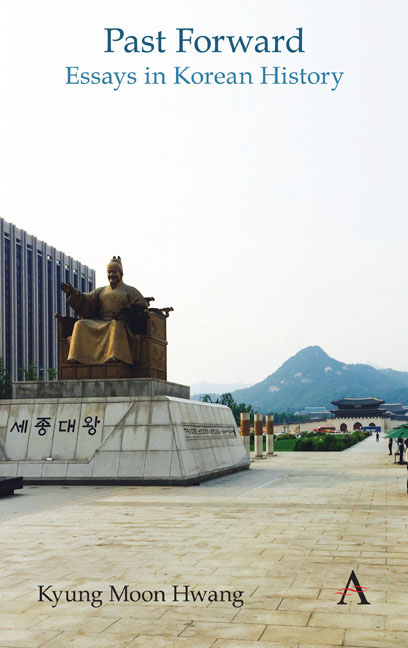Book contents
- Frontmatter
- Contents
- List of Figures
- Foreword
- Chronologies of Korean History
- Themes
- Acknowledgments
- Note on Romanization and Spelling
- Part I Circulating History
- Part II Durable Traditions
- Part III Ancient Remains
- Part IV Dynastic Depths
- Part V Modern Origins
- Part VI Challenges of Nationhood
- Part VII History Makers
- Part VIII External Presences
- 52 Korea's Complicated Relationship with China
- 53 How Chinese was Chinese History?
- 54 Tiananmen and the Power of History
- 55 Lotte between Korea and Japan
- 56 Comfort Women Beholden to History
- 57 A Modest Proposal for Dokdo
- 58 The General Sherman Incident of 1866
- 59 Depictions of the United States
- 60 Overcoming Old Views of Korea–United States Ties
- 61 Foreign Language Dependency
- Part IX Trials of Modernization
- Part X Gripped by the Past
- Index
58 - The General Sherman Incident of 1866
from Part VIII - External Presences
- Frontmatter
- Contents
- List of Figures
- Foreword
- Chronologies of Korean History
- Themes
- Acknowledgments
- Note on Romanization and Spelling
- Part I Circulating History
- Part II Durable Traditions
- Part III Ancient Remains
- Part IV Dynastic Depths
- Part V Modern Origins
- Part VI Challenges of Nationhood
- Part VII History Makers
- Part VIII External Presences
- 52 Korea's Complicated Relationship with China
- 53 How Chinese was Chinese History?
- 54 Tiananmen and the Power of History
- 55 Lotte between Korea and Japan
- 56 Comfort Women Beholden to History
- 57 A Modest Proposal for Dokdo
- 58 The General Sherman Incident of 1866
- 59 Depictions of the United States
- 60 Overcoming Old Views of Korea–United States Ties
- 61 Foreign Language Dependency
- Part IX Trials of Modernization
- Part X Gripped by the Past
- Index
Summary
In reflecting on why the United States and North Korea have seemed so often to stand on the brink of military confrontation, we can start by considering the patterns of American–Korean interactions from the past, and here we must go back a century and a half. The relationship began, in fact, very badly, in the late summer of 1866.
That was when an intruding Western merchant ship, buoyed by the annual monsoons, steamed up the Daedong River to Pyongyang despite stern warnings earlier from Korean authorities to retreat. When the rains subsided, the ship became stuck on a sandbar, and following the failure of negotiations to reach a solution, as well as the foreigners’ apparent abduction of a Korean official, Koreans set the ship on fire. Crew members fleeing to shore were all killed.
The American captain, who had led a handful of Western officers and a crew of mostly Malay and Chinese sailors, had commandeered a British ship in Shanghai and, in embarking on a hasty mission to force open Korea to trade relations, renamed the ship the “General Sherman.” General William Tecumseh Sherman had been a fierce northern commander in the American Civil War, just concluded the year before in 1865, who had mercilessly torn through parts of the south in one of the war's most memorable episodes.
So began the history of United States–Korean relations, through the provocations of a few delusional Americans convinced they could push themselves into a country about which they knew almost nothing and force its government to change fundamental, long-standing behaviors. In hindsight, this was the height of haughty stupidity, but the lessons apparently were not learned, as a fleet of American marines tried to invade Korea five years later, in 1871, partly to exact vengeance and partly to attempt the same kind of gunboat diplomacy again.
The General Sherman incident helped shape the dominant reaction, among Korea's political and social leaders, to prospects of contact with the outside world. Indeed, earlier that same year the Prince Regent, or Daewongun, who controlled the throne in place of his adolescent son, had ordered a brutal persecution of Catholics, killing hundreds of believers, including French priests working underground. A French armada hence launched a punitive expedition on the west coast, which served only to harden Koreans’ resistance.
- Type
- Chapter
- Information
- Past ForwardEssays in Korean History, pp. 170 - 171Publisher: Anthem PressPrint publication year: 2019



